Growth, Marketing & AI Hacks for Bootstrapped Founders: How to Grow Without Breaking the Bank
Small Business OS: Learn how to scale without breaking the bank and overcome the biggest challenges of a bootstrapped founder.
So, you’ve got the basics of bootstrapping down (we laid the foundations in last week’s article in case you missed it). You know how to start lean, make the most of your resources, and keep things running on a budget. Now, it’s time to shift gears and think bigger, and that’s what we’ll be covering in Part 2.
So what is the next step? Scaling without breaking the bank. In this part of the guide, we’ll dive into strategies for long-term growth, how to reinvest your revenue wisely and set the foundation for long-term success, marketing hacks that actually work, and AI prompts to streamline your operations, so that you can work smarter, not harder.
Let’s build something great!
Table of Contents
Building a Sustainable Tech Stack
Strategies to Bootstrap Marketing and Growth
Reinvesting Your Revenue
Time Management Tips for Bootstrapped Founders
Challenges of Bootstrapping (and How to Overcome Them)
AI Prompts to Help You Bootstrap
Podcasts for Bootstrappers
From Seed to Success
1. Building a Sustainable Tech Stack
As you grow, you’ll need a tech stack that keeps you organized, helps you communicate, and supports scaling, without draining your wallet.
Here are some must-have tools (our personal top choices) to keep your business running efficiently in different key areas of your business operations:
Project Management: Trello, Notion
A strong project management tool is essential for keeping tasks, deadlines, and workflows organized. Trello is a fantastic, user-friendly tool that uses boards, lists, and cards to help you track tasks and manage projects. Its free version offers enough features for most small businesses to stay on top of things without needing to pay for a premium plan.
If you’re looking for a tool that can handle more complex needs while still being intuitive, Notion is a great option. It allows you to combine project management, note-taking, and knowledge management all in one platform. You can create databases, to-do lists, calendars, and even wikis.
Both tools provide seamless collaboration features, allowing you to manage tasks solo or as a team with minimal effort.
Communication: Slack, Zoom
Effective communication is critical for any business, and even more so when you're working on a tight budget. Slack is a must-have for quick, real-time communication. It allows teams to chat in channels, share files, and collaborate on projects without the constant back-and-forth of emails. It’s an essential tool for keeping your team on the same page and staying connected.
For video conferencing and remote meetings, Zoom is the go-to solution. Whether you’re meeting with clients, investors, or team members, Zoom is reliable, easy to use, and offers free plans for small meetings (up to 40 minutes). As your business grows, you can explore paid plans for more advanced features like longer meetings and larger participant limits.
E-commerce: Shopify, WooCommerce
If your business is e-commerce-based, choosing the right platform for your online store is your top priority. Shopify is one of the best options for bootstrappers who want to launch a professional online store quickly. With its user-friendly interface, various built-in features, and customizable templates, Shopify takes the hassle out of managing an e-commerce business. It does come with a subscription cost, but it offers excellent scalability for growing businesses.
On the other hand, WooCommerce is a plugin for WordPress and is a great choice for those who prefer to manage their store on an open-source platform. It’s a more cost-effective option, especially for businesses already running on WordPress. While WooCommerce might require a bit more technical know-how, it offers great flexibility and a large community of developers and users.
Both platforms provide powerful tools to manage inventory, process payments, and track customer data, which are essential for running a successful online store.
Accounting and Finances: QuickBooks, Wave
When you’re handling your business finances, staying organized is really important. It helps you keep track of cash flow, manage taxes, and easily pull together financial reports when you need them, making your life a lot easier in the long run.
QuickBooks is a widely used accounting software that offers everything from basic bookkeeping to tax filing assistance. It’s simple enough for small business owners to manage their books on their own, but also robust enough to handle complex financial needs as your business grows.
However, if you're looking for a free alternative, Wave offers an excellent suite of accounting tools for small businesses. It includes features for invoicing, accounting, and receipt scanning. While Wave’s free plan may not have all the features offered by QuickBooks, it’s an ideal solution for entrepreneurs just starting out and looking to keep their financial management costs to a minimum.
Marketing and Analytics: Buffer, Google Analytics
Marketing and analytics tools help you track your performance and optimize your campaigns to reach the right audience. Buffer is a great tool for scheduling and managing social media posts. It allows you to schedule posts across multiple platforms, track engagement, and analyze performance. Buffer’s free plan is a great starting point for small businesses, while its paid plans offer advanced analytics and more publishing options.
For analyzing website traffic and understanding user behavior, Google Analytics is an essential tool. It provides detailed insights into your website’s performance, visitor demographics, and conversion rates. And the best part is that it’s free and integrates with most other marketing tools. Google Analytics allows you to fine-tune your marketing efforts and make data-backed decisions to improve your business’s visibility and performance.
Here’s a quick summary to keep at hand:
2. Strategies to Bootstrap Marketing and Growth
When you’re starting a business with limited funds, it’s essential to approach marketing and growth thoughtfully and strategically. You won’t have the luxury of big advertising budgets or large marketing teams, which means you’ll need to think outside the box.
This could mean leveraging social media, connecting with your local community, or even using word-of-mouth to your advantage. The good news is that there are countless creative ways to promote your brand and reach new customers without breaking the bank, proving that sometimes less really is more.
Organic Social Media
Social media is one of the most powerful marketing tools at your disposal, and it’s completely free to use. Whether you’re active on Instagram, Facebook, LinkedIn, or Twitter, consistently posting and engaging with your audience can help build brand awareness and a loyal community. Some good examples of effectively using your social media platforms are sharing valuable content, behind-the-scenes glimpses of your business, and customer success stories.
Make sure to also engage with followers directly, responding to comments, liking posts, and starting conversations. This boosts your visibility and builds trust and rapport with potential customers. And don’t forget about the power of user-generated content; encourage happy customers to share their experiences and tag your business.
Content Marketing and SEO
Content marketing is a long-term game that can yield significant results, and it’s one of the most effective ways to bootstrap your marketing efforts. Start by creating a blog on your website where you can share relevant, helpful content that addresses your target audience’s pain points. Blog posts, how-to guides, and FAQs can all help you rank higher in search engine results, which means more organic traffic coming to your website.
Search engine optimization (SEO) is crucial for boosting your content’s visibility. Make sure you’re optimizing your content with the right keywords, meta tags, and internal linking strategies to improve your chances of showing up in Google search results. Tools like Google Keyword Planner and Semrush can help you identify the best keywords for your niche.
While content marketing and SEO take time to deliver results, they’re highly effective for bootstrapped businesses that need to build long-term organic traffic and credibility.
Referral Programs and Word-of-Mouth
Word-of-mouth marketing is one of the oldest and most effective strategies to grow your business. If your product or service provides exceptional value, your customers will naturally want to share their experiences with others. You can take advantage of this by creating a referral program that rewards customers for referring new business to you.
Referral programs can include offering discounts, free products, or special perks for both the referring customer and the new customer. This is a great way to incentivise your existing customer base to spread the word and help you acquire new clients without having to spend on ads. Keep it simple, and make sure the rewards are enticing enough to encourage people to share their positive experiences.
Collaborations and Partnerships
As a bootstrapped business, you probably don’t have the budget to work with high-profile influencers or massive brands. But that doesn’t mean you can’t leverage partnerships and collaborations to reach a wider audience. For example, you could consider teaming up with other small businesses that share a similar target audience but aren’t direct competitors. You can co-host an event, run a joint social media campaign, or even create cross-promotional content like guest blog posts or product bundles.
Collaborating with others allows you to tap into their audience, expand your reach, and share resources, and you can do all this without spending big bucks. Plus, these partnerships often bring a sense of community and mutual support, which can create stronger, more lasting relationships.
Email Marketing
Email marketing is another powerful tool for growing your business, especially when you’re bootstrapping. Building an email list from day one is a must, as it gives you direct access to your audience and allows you to nurture relationships over time. Use opt-in forms on your website and social media pages to collect email addresses in exchange for something valuable such as an ebook, checklist, or special discount.
Once you’ve built your list, use it to send targeted campaigns that provide value, showcase new products or services, and keep your audience informed about promotions or updates. Platforms like Substack or beehiiv are affordable and offer automated email marketing solutions, allowing you to run campaigns and stay in touch with customers without spending too much time or money.
Public Relations and Media Outreach
If you don’t have a big budget for paid advertising, public relations can be an effective way to get your business in front of a larger audience. Start by identifying local media outlets, blogs, and influencers that are relevant to your industry and target market. Following that, reach out to them with a compelling pitch about your business and its unique selling points.
Whether it’s a feature article, interview, or press release, securing media coverage can help boost your credibility and provide free publicity. Keep your pitch concise and personalized, and always focus on how your business provides value to the publication’s audience. Public relations doesn’t have to be expensive, and it can give your business the exposure it needs to grow.
3. Reinvesting Your Revenue
When you’re bootstrapping a business, every dollar counts, and one of the best ways to ensure long-term growth is by reinvesting your revenue. Every sale you make should be seen as an opportunity to fuel your business's future success. Reinvesting allows you to scale operations, improve your product or service, and expand your reach without relying on outside investors.
We’ve already explored reinvestment as an option to fund your venture. Now, let us discuss this in more detail and see how you can make the most of the money your business is generating:
Invest in Product or Service Improvements
Your product or service is the backbone of your business. If it’s not top-notch, your customers will notice, and your business growth may be impacted. Reinvesting your revenue into enhancing your offerings can pay off in the long run. This could mean developing new features, improving product quality, or refining your service delivery.
Listen to your customers and pay attention to their feedback. Are there any recurring pain points or features they wish you had? Can you optimize your product to deliver even more value? By continuously improving, you not only keep your existing customers happy, but you also increase the likelihood of attracting new ones through positive reviews and word-of-mouth referrals.
Scale Marketing Efforts
Once your initial marketing strategies are bringing in some results, it’s time to reinvest in scaling those efforts. Whether it’s expanding your social media reach, running paid ads, or creating more content to drive traffic, reinvesting in marketing is essential for business growth.
Start by identifying which marketing channels are generating the most return on investment (ROI). If you find that Facebook ads are bringing in more leads than organic social media posts, for example, allocate more budget to advertising. Alternatively, if blog content is driving traffic, reinvest in content creation, SEO, and promotion.
By optimizing and scaling your marketing efforts, you’ll reach a larger audience and keep the momentum going as you grow your customer base.
Build a Stronger Team
If you’re bootstrapping, it’s likely that you’re wearing many hats in the early stages. But as your business grows, it’s important to build a team that can handle different aspects of the business, allowing you to focus on what you do best. Reinvesting your revenue into hiring talented employees, contractors, or freelancers can increase your productivity and help you deliver better results.
Consider outsourcing tasks that aren’t your core competency, such as bookkeeping, graphic design, or marketing. Hiring the right people, even on a part-time or freelance basis, can provide your business with much-needed expertise and bandwidth to take on bigger projects.
Upgrade Your Technology
In today’s digital world, having the right tools at your disposal is essential to keeping up with the competition. Initially, you’ve started off with free tools for running the initial stages of your business. But as profits come in, consider reinvesting your revenue into upgrading your tech stack. It could be to improve your website, or getting premium versions of automation tools, or expanding your software capabilities. All of this can enhance your efficiency and customer experience.
For example, if you’re managing an online store, putting your money into a more advanced CRM system or improved inventory management tools could really make a difference. These investments can help you run your operations more smoothly, keeping your costs down and making life a lot easier in the process.Similarly, upgrading your website or investing in UX/UI design improvements can help convert more visitors into customers. Every dollar spent on tech upgrades should be aimed at boosting your business’s scalability and performance.
Diversify Revenue Streams
Once your business is stable and profitable, consider reinvesting revenue into developing new revenue streams. Diversification reduces risk and provides additional growth opportunities.
You could expand your product line, offer complementary services, or even explore new markets. For example, an e-commerce business might start offering subscription services, while a service-based business might branch into digital products or online courses. The more you can create multiple ways to generate income, the more your business will thrive in the long run.
Save for Future Investments
It’s easy to get caught up in the excitement of growing your business and reinvesting every dollar into immediate needs. But it’s also important to put aside funds for future opportunities. By saving a portion of your revenue, you can ensure that you have a financial cushion for unexpected expenses or future investments that require larger sums of money.
This savings fund can act as a safety net during slower months. It can also be used for significant business milestones, such as expanding into a new market or making a big technology investment. A well-defined reinvestment strategy involves both short-term and long-term thinking, ensuring that your business continues to thrive while being prepared for the future.
4. Time Management Tips for Bootstrapped Founders
As a bootstrapped founder, time is one of your most valuable assets. You’re juggling many tasks, often wearing multiple hats, and it can be overwhelming to manage everything on your own.
But with the right time management strategies in place, you can stay organized, focused, and productive, helping you make the most of every minute. Here are some key tips to help you manage your time effectively:
Prioritize Revenue-Generating Activities
When resources are limited, it’s crucial to focus your time and energy on activities that directly contribute to your business’s bottom line. As a bootstrapped founder, you don’t have the luxury of spending hours on tasks that don’t drive revenue or growth.
Start by identifying the activities that have the most significant impact on your revenue. For example, customer outreach, sales calls, marketing campaigns, and product development are all activities that should be at the top of your to-do list.
You can use the 80/20 rule (Pareto Principle) to guide your priorities, 80% of your results come from 20% of your efforts. Once you’ve identified the tasks that bring in the most value, focus on them first and eliminate or delegate the tasks that don’t directly contribute to generating income.
Automate. Automate. Automate.
Automating repetitive tasks is one of the best ways to save time and improve efficiency. As a bootstrapped founder, you likely don’t have the bandwidth to handle every detail, but automation tools can help you streamline operations and take care of time-consuming tasks automatically.
We’ve already discussed the power of automation tools in saving time and effort. For example, email marketing platforms like Mailchimp allow you to set up automated email sequences, while social media management tools like Buffer or Hootsuite allow you to schedule posts in advance. You can also automate invoicing, customer support ticket management, and even bookkeeping with tools like QuickBooks and FreshBooks.
By automating repetitive tasks, you can free up valuable time to focus on strategic growth and innovation.
Outsource When Necessary
Golden rule: always outsource whenever you can. As a business owner, you’ll find yourself juggling multiple roles, but there will come a time when outsourcing some tasks is the smart move, so you can focus on more strategic initiatives and act as the CEO.
You will burn out if you’re always trying to do everything on your own, plus decreased productivity, and missed opportunities. Instead of doing everything yourself, consider outsourcing tasks that are outside of your expertise or that take up too much of your time.
For instance, you might want to outsource graphic design, content creation, or even social media management if these aren’t areas where you excel or if they require too much time. Freelancers and contractors are an affordable option, and platforms like Upwork and Fiverr make it easy to find skilled professionals who can help you on a project-by-project basis.
Additionally, outsourcing tasks like customer support, IT management, or accounting can also free up your time to focus on higher-value work. While you may have to allocate some of your revenue towards outsourcing, the benefits such as improved quality, faster execution, and more time to focus on growth make it a wise decision.
5. Challenges of Bootstrapping (and How to Overcome Them)
Starting a business from scratch is an incredibly rewarding journey, but it’s not without its challenges. You’ll likely wrestle with limited budgets and exhausting hours, and sometimes it can feel like the universe is throwing roadblocks in your way.
What’s vital is how you tackle these hurdles. Being proactive, coming up with strategies to overcome obstacles, and staying resilient can help you navigate this rocky path. Here are three of the biggest challenges you’re likely to encounter as a bootstrapper and some tips on how to conquer them.
Cash Flow Management
Cash flow is at the core of any business, and when you’re bootstrapping, managing it becomes even more critical. Without investors or external funding, your revenue generation and expense management must be finely tuned. Mismanagement of cash flow can lead to late payments, missed opportunities, or worse, running out of funds altogether.
How to Overcome It:
To manage cash flow effectively, track your income and expenses meticulously. Use accounting tools like QuickBooks or Wave to stay on top of your finances. Make sure to create a budget that accounts for both fixed and variable costs, including unexpected expenses.
Additionally, prioritize essential expenses such as payroll, utilities, and inventory and delay non-essential costs until you have more stable revenue. If possible, negotiate payment terms with vendors or clients to extend your receivables and better align with your cash inflows.
As discussed earlier, establishing an emergency fund is also a smart strategy. This can help you weather slow months or cover unexpected costs without jeopardizing your business.
Burnout
As someone who’s bootstrapping your business, you’re probably wearing a lot of different hats and working tirelessly to turn your dreams into reality. While passion is a huge motivator, over time, this relentless pace can lead to burnout. Burnout not only affects your health but can also hinder your productivity and creativity.
How to Overcome It:
The key to overcoming burnout is knowing when to take a step back. Set clear boundaries and practice time management strategies to avoid overwhelming yourself. Prioritize tasks, and as mentioned before, focus on revenue-generating activities that will keep your business growing.
It’s also essential to ask for help when needed. Don’t be afraid to outsource tasks, even if it’s just part-time or temporary assistance. Hiring freelancers for specific roles, such as customer support or social media management, can ease your workload and allow you to take breaks without sacrificing your business’s success.
Lastly, take care of yourself physically, mentally, and emotionally. Prioritize self-care, exercise, and relaxation, and don’t forget to celebrate small wins along the way. Taking care of your well-being isn’t a luxury; it’s an investment in your long-term success.
Scaling Without Capital
One of the toughest challenges of bootstrapping is scaling your business without the help of external capital. Whether you’re looking to expand your product line, hire more employees, or enter new markets, scaling often requires more resources than a small bootstrap budget can afford.
How to Overcome It:
Focus on organic growth by using low-cost marketing tactics such as social media, content marketing, and SEO. Word-of-mouth and customer referrals can be powerful tools for attracting new customers without spending much.
You can also consider strategic partnerships or collaborations that allow you to pool resources and expand your reach. Joint ventures, affiliate marketing, or co-branding opportunities can provide exposure to new audiences and help with scaling.
A few other ideas include:
Optimizing Pricing & Upsells:
If you already have a customer base, increasing revenue doesn’t always mean finding new customers, it can mean maximizing the value of existing ones. Use upsells, cross-sells, and premium offerings to boost profits.
Community-Driven Growth:
Building a loyal community around your brand can greatly help with organic growth. Engage with customers through social media, host webinars, and create a referral program to encourage word-of-mouth marketing.
Pre-Sell & Crowdfund:
If you need capital to scale, consider pre-selling your product or using crowdfunding platforms like Kickstarter or Indiegogo. This allows you to fund production without upfront investment.
Remember: Always look for ways to improve operational efficiency and streamline processes, so you can handle increased demand without a proportional increase in expenses. Automate tasks, outsource non-core functions, and invest in scalable technology that supports your growth without requiring heavy upfront costs.
6. AI Prompts to Help You Bootstrap
AI can be a powerful tool for small business owners as it provides both a creative and cost-effective solution to help you grow and scale. With the help of AI, you can streamline operations, enhance marketing efforts, and even refine your business strategies.
Here are some AI prompts to guide you on your bootstrapping journey:
1. "Generate a 3-month marketing plan for a small business with $500 in funding."
AI can help create a focused marketing plan that maximizes your small budget. With this prompt, you can receive tailored marketing strategies that prioritize low-cost, high-impact tactics like social media, content marketing, and email campaigns.
2. "List 10 creative ways to validate a business idea with zero budget."
If you’re bootstrapping, you need to validate your business idea without spending a dime. This prompt can generate a list of innovative ways to test your concept through surveys, market research, and even guerrilla marketing techniques, all without breaking the bank.
3. "What are the most affordable tools for running an online store?"
Running an e-commerce business on a tight budget means finding affordable tools that get the job done efficiently. With this prompt, AI can suggest tools for website hosting, inventory management, customer service, and more helping you optimize your business while staying within budget.
4. "Draft a social media content calendar for a handmade jewelry business."
Social media is an invaluable tool for bootstrapped businesses, and an AI-generated content calendar can help you plan your posts to stay consistent and engage your audience effectively. This prompt can help create a strategy for Instagram, Pinterest, Facebook, and other platforms, tailored specifically to your handmade jewelry business.
5. "Create a budget-friendly email marketing strategy for a startup."
AI can help you craft a targeted email marketing campaign with minimal cost. This prompt can provide insights into effective subject lines, email sequence strategies, and segmentation methods to ensure that your emails reach the right audience without stretching your budget.
6. "Generate a list of 5 low-cost customer acquisition strategies for a new business."
Acquiring customers on a budget is a major concern for bootstrappers. This prompt can produce practical strategies like referral programs, leveraging existing networks, and using content to drive organic traffic tactics that can grow your customer base without the need for expensive advertising.
7. "What are the best free tools for managing a remote team?"
Bootstrapped businesses often rely on remote teams, and this prompt can further help you find the best free tools for collaboration, project management, and communication essential for running an efficient team while keeping costs low.
8. "Suggest 5 cost-effective ways to automate customer service for a small business."
Providing excellent customer service on a budget is possible with automation. This prompt can suggest tools and strategies to automate your support systems, such as chatbots, helpdesk software, and FAQ sections, allowing you to serve customers efficiently without hiring a large team.
7. Podcasts for Bootstrappers
Podcasts can be an invaluable resource for entrepreneurs, offering expert insights, success stories, and practical advice all available on the go. For bootstrappers, the right podcast can provide the motivation and strategies needed to navigate the challenges of building a business without outside funding.
Here are a few must-listen podcasts for bootstrappers:
The Indie Hackers Podcast
Hosted by Courtland Allen, The Indie Hackers Podcast features interviews with successful solo entrepreneurs and small business founders who have built profitable businesses without relying on venture capital. Each episode dives deep into the founder's story, their challenges, and their strategies for success.
Why We're Recommending It: This podcast is perfect for bootstrappers because it focuses exclusively on independent business owners and offers actionable insights on how they grew their businesses with minimal resources. It's filled with real, raw stories from entrepreneurs who’ve done it all with little to no outside funding.
The Bootstrapped Founder
Hosted by Arvid Kahl, The Bootstrapped Founder podcast is a great resource for anyone looking to build a SaaS or online business from the ground up. Arvid shares his personal experiences as well as expert advice on how to create, grow, and scale a bootstrapped company.
Why We're Recommending It: Arvid is a seasoned entrepreneur who built and sold his SaaS business. His podcast provides deep, thoughtful content about the struggles and wins of bootstrapping, focusing on topics like pricing, customer acquisition, and sustainable growth. It's a must-listen for those in the software or tech space.
The Smart Passive Income Podcast
Pat Flynn’s Smart Passive Income Podcast covers various ways to build and grow passive income streams, from blogging and online courses to affiliate marketing and e-commerce. Pat frequently interviews successful entrepreneurs who have bootstrapped their businesses.
Why We're Recommending It: Pat's podcast is incredibly useful for bootstrappers because it offers detailed strategies for growing a business sustainably. Whether you're interested in scaling a blog, creating an online product, or building an e-commerce business, Pat provides real-world examples, tools, and insights you can implement right away.
Foundr Podcast
Hosted by Nathan Chan, the Foundr Podcast features interviews with some of the world’s most successful entrepreneurs. While many of the guests are well-known names in business, the focus remains on practical advice and strategies that can be applied by bootstrapped startups.
Why We're Recommending It: The Foundr Podcast brings in established entrepreneurs who discuss the challenges and strategies they've used to grow their businesses. This podcast offers high-level advice and detailed breakdowns of what it takes to bootstrap a business, particularly in the e-commerce and digital marketing spaces.
StartUp Podcast by Gimlet
Created by Alex Blumberg and Lisa Chow, the StartUp podcast chronicles the journeys of various entrepreneurs, including those who’ve bootstrapped their businesses. It covers everything from the excitement of starting a business to the challenges of running one without outside investors.
Why We're Recommending It: The StartUp podcast is perfect for bootstrappers because it offers an honest, behind-the-scenes look at the real-life challenges of building a business. It’s filled with relatable stories and helpful takeaways, making it an inspiring and educational listen for anyone starting their own journey.
The Fizzle Show
The Fizzle Show is a podcast focused on helping entrepreneurs create sustainable and successful online businesses. Hosts like Corbett Barr and Chase Reeves tackle a variety of topics, from marketing strategies to mindset shifts and business growth tactics.
Why We're Recommending It: This podcast is geared toward creative entrepreneurs who want to build a meaningful business. It's practical, down-to-earth, and offers a lot of tips that can be applied to bootstrapping. Whether you're running a blog, a consulting business, or an online store, you'll find valuable advice here.
8. From Seed to Success
Imagine starting with just a few ideas, a modest budget, and a determination to succeed. By embracing a lean model, finding creative workarounds with the right tools, reinvesting your profits, and keeping your eyes on value-driven growth, you can build something sustainable without needing outside funding.
Every challenge you face becomes a chance to refine your approach, and every dollar saved is a step toward financial independence. Whether you’re embarking on this journey solo or gradually scaling up with a small, dedicated team, remember that success isn’t measured by the size of your initial investment, it’s defined by how wisely you use what you have!



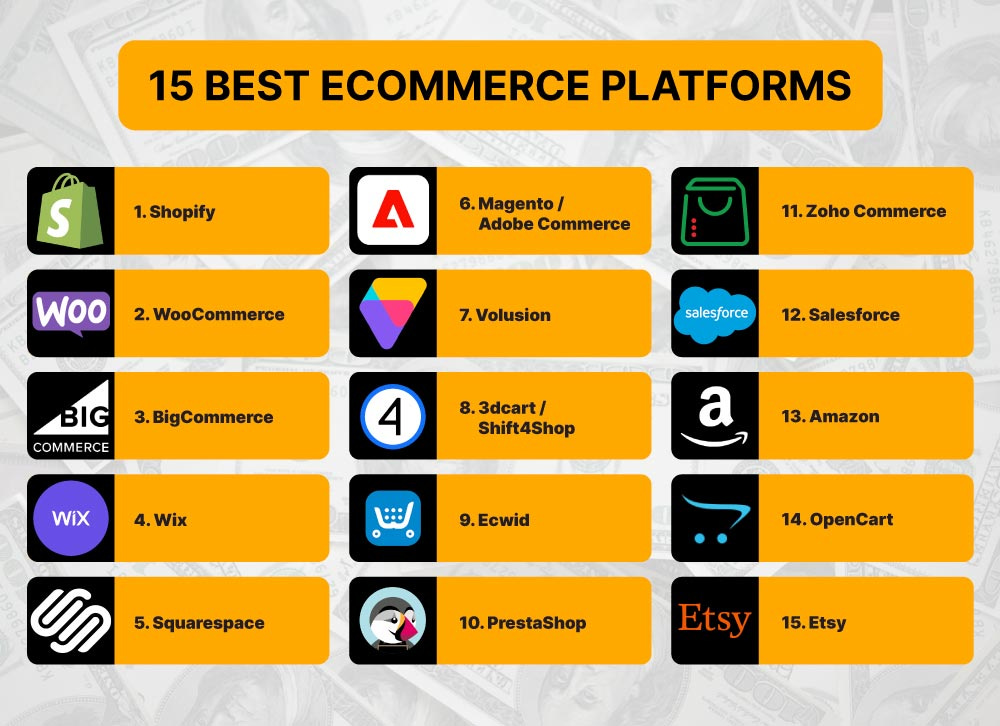
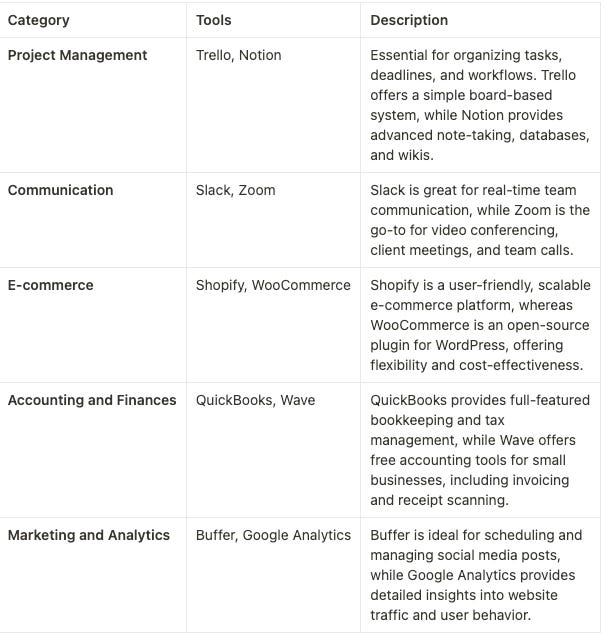
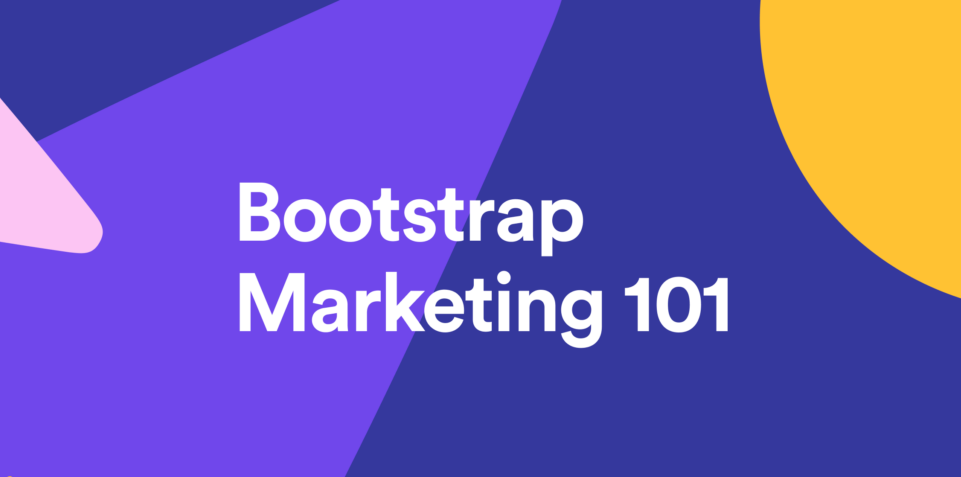
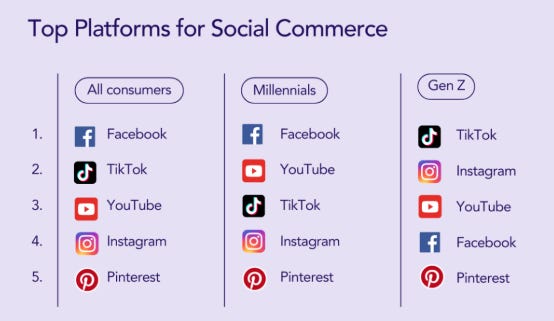

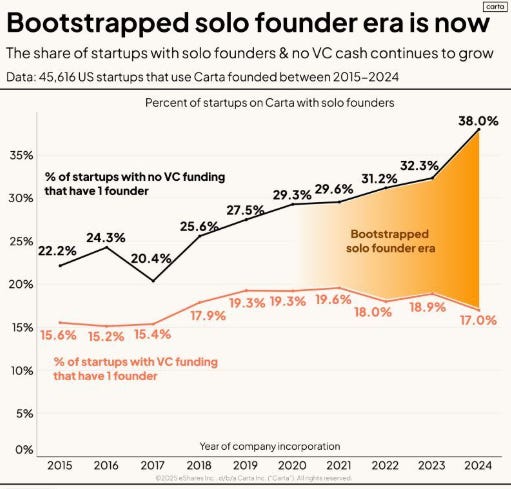
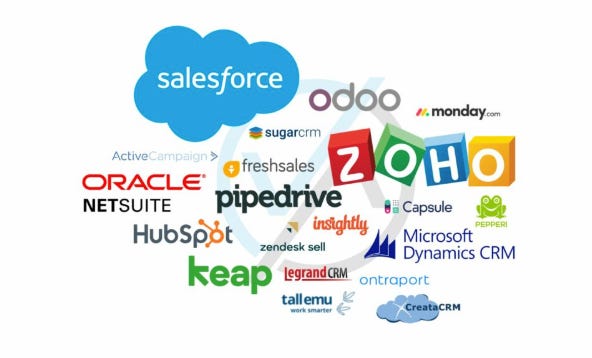










Love it
Automate where you can, outsource where you must, and let your customers fuel organic growth.